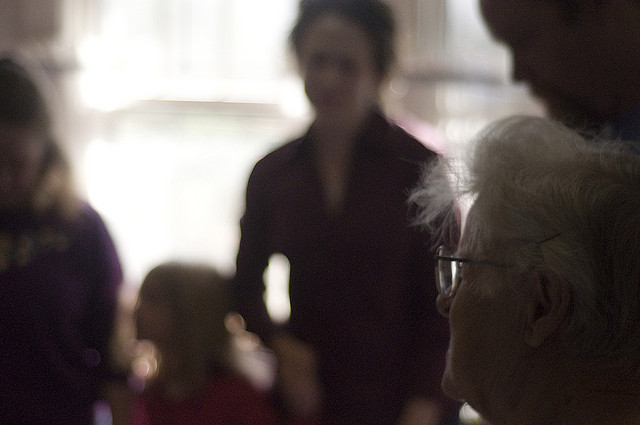(Numbers 6:22-27; Galatians 4:4-7; Luke 2:15-21; Psalm 8)
PDF | Text:
Some of you know that my job at Virginia Seminary is as a coach and curator in the area of Christian formation. So I spend my days immersed in the world of best practices for teaching and learning about faith, for claiming and practicing and living faith. It’s my job to distill and share what church leaders, researchers, curriculum writers, seminary faculty, and others have learned about passing on this great gift of God.
One of the chief lessons of this work might surprise you: Studies have shown that the most significant factor among those that help faith “stick” in adolescents and persist into adulthood is what researchers call “family religiosity”: talking about faith, participating in household devotions, serving those in need as a family. In other words, faith is formed, or not, in the home—more so than in church, it turns out. And adults benefit from family religiosity too, both of their family of origin and their faith at home practice as adults—even single adults.
This is both an intimidating and an empowering reality. Even if we sometimes feel unsure about adapting or creating family prayers, rituals, and other practices (and I don’t mind admitting that I do), it’s nice to have this concrete reminder that the way we live our everyday lives matters not just to God but to the corporate lives of even our smallest faith communities.
That, in my opinion, is why it’s worth rising early-ish on New Year’s Day to celebrate this Feast of the Holy Name, or what the 1662 prayer book called the Feast of the Circumcision.
The story of Jesus’s first day on earth is dramatic, what with the full inn and the manger, the shepherds and flocks and heavenly hosts crying Gloria! The story of the baby Jesus’s eighth day of life is briefer and relatively ordinary: “After eight days had passed, it was time to circumcise the child; and he was called Jesus, the name given by the angel before he was conceived in the womb” (Luke 2:21).
The circumcision and naming was just the first rite of passage for Jewish boys in Ancient Israel. It almost certainly took place at home, and not in the Temple as some Christian art portrays. But this art may be confusing the Circumcision of Jesus with the Presentation of Jesus in the Temple, which happened next. Luke tells us this later rite took place partly in fulfillment of the Torah’s command to redeem firstborn sons by the sacrifice of a lamb or, in the case of poor couples like Mary and Joseph, two “turtle-doves or young pigeons” (2:24b).
We don’t know much else about the faith practices of the Holy Family, except for a yearly pilgrimage to Jerusalem. And Jesus did not live to reach many later life-stage transitions. But he did famously attend a wedding feast, and use that particular rite of passage as a metaphor in much of his teaching. We also believe that he instituted the Eucharist in another bit of at-home religious observance: the sharing of the Passover meal with his friends.
Even those of us who are terrified of praying or talking about God at home have probably been attending to family faith during the holiday season. We made ready our homes with decorations. Perhaps we lit Advent wreaths. And we almost certainly gave or received gifts or participated in a festive meal. I believe these practices and the holiday season in general can be a source of valuable momentum for this particular aspect of Christ-like living.
So in addition to its primary meanings, I submit that we might think of today more broadly as a feast honoring rites of passage, a feast celebrating everyday faith.
To observe it, let’s spend some time considering how in 2015 we might attend to our faith not just at church but in our households of whatever size.
- What new or additional ritual might help faith stick a bit more for us?
- What practice with friends and loved ones could regularly gather us around the light of Christ?
- What rite of passage or other life transition might provide an occasion to give thanks for God’s many blessings or even to share with God that we’re ready for better?
There are so many resources to recommend, but we might make a start by taking a look at the Daily Devotions for Individuals and Families found on page 136 of the Book of Common Prayer. And if they don’t appeal to you, ask your fellow parishioners or one of the clergy for some ideas. The most important thing is that you find a practice that works for you.
So Happy New Year. Happy Feast of the Holy Name. And happy hunting at home for new ways to engage and deepen your faith in the God who came among us in an extraordinary—and also ordinary—human life.
Image credit: “Thanksgiving 2008” by Matthew Self via Flickr (CC BY-NC 2.0)
